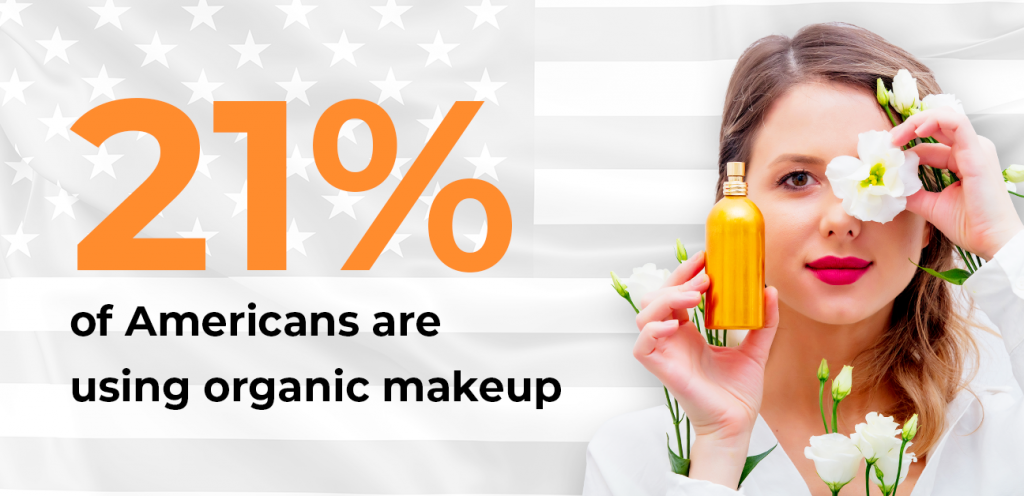
The cosmetics industry report refers to the manufacture, distribution, and sale of cosmetic products such as foundation and mascara, skincare and moisturizers, shampoos and conditioners, perfumes and fragrances. The United States is the biggest cosmetic market in the world, with an approximate total revenue of $62 Billion and employing somewhere on the order of 63,816 people in 2016. In Europe, Germany is the biggest single market. And behind skincare, fragrances is the second-largest segment of the cosmetics industry.
There is a long history of using fragrances for all manner of pleasures and enhancements. Ancient civilizations across Asia traded in such odors as frankincense and sandalwood. And these scents are still in use today–even, at times, for medicinal purposes.
Consumer preferences around perfuming have changed along with broader trends; people don’t want to wear their mothers’ perfume. Some have posited that younger consumers tend to have a negative perception of artificial ingredients often used in a variety of fragrant sprays. As such, there has been a movement to incorporate organic ingredients in cosmetics–and fragrances are no exception to that trend; 21% of Americans are using organic makeup. A new fragrance from Ellis Brooklyn is packaged in an environmentally-friendly glass bottle and made without petroleum.

The average consumer sentiment in the fragrance industry in the first half of 2020 is 90%. Meaning, the vast majority of reviews that discuss fragrances are positive. The number of reviews collected stands at 600,000. Each review is from a verified purchase.
Cosmetic Industry Report: The Big 7
Fragrances can be divided into a number of subcategories–mainly, as follows: floral, sweet, fruity, light, fresh, subtle, clean, soft, feminine, spicy, vanilla, and musky.
Our data shows the worst-performing fragrances of late have been vanilla and musky, with an average customer sentiment of:
Vanilla: 88%
Musky: 84%
As people faced quarantine at home in the first half of 2020, they sought happier stimulants–while these scents are often associated with oriental tones, and can conjure incense. They are, perhaps, psychologically, the opposite of fresh–and for a product to be associated with freshness–something new, and glowy–is, of course, a product held in esteem. However, there is a pattern in Western life, that what was once avant-garde, becomes commonplace, and what is commonplace, becomes unfashionable–until, in time, the cycle begins anew. And so, some oaky scents–such as vanilla, and cinnamon–have been increasingly used in alternative medicine as essential oils.
Essential oils–and other ingredients touted as natural–have seen a resurgence in consumer interest, reflecting increasingly robust interest in health and wellness; and it can be posited that the pandemic furthered the drive to live a healthy lifestyle. The discussion volume with respect to natural and organic products in fragrances as increased as follows:
75% YOY growth in 2018
37% YOY growth in 2019
60% YOY growth in 2020
There is, then, a category of fragrances with a somewhat stable market share and customer base: floral, sweet, and fruity. These scents are related to one another–under the umbrella of fresh and fruity, not, oriental and woody. We see no significant changes in user sentiment and discussion volume as related to these fragrances. Their performance, as measured by average customer sentiment, is as follows:
Floral: 90%
Sweet: 90%
Fruity: 90%
Floral tones are most often used in women’s products, and smell like fresh-cut flowers with a powdery undertone. The stable popularity of floral tones typify the persistent cultural norm associated with women wearing perfume. Often, women’s fragrances are associated with festive attire intended for high-brow events and nighttime gatherings. These products, as such, can command a hefty price tag; A floral Chanel No.5 product was recently on sale for $135 for 3.4 ounces. Marketing floral scents involves being detailed as related to the scope and nature of flowers held within a particular perfume: Chanel notes a bouquet composed around May Rose and Jasmin.
Companies marketing perfumes often boast that a variety of scents are captured in one perfume: undertones, overtones, base tones, and the like. A Dolce and Gabbana product for men boasts of a fusion of tones. This same product extols its benefits as related to masculinity. Indeed, marketing speaks to one’s aspirations. And so, a floral perfume by Victor and Rolf advised that its product was best for confident women who can command a room.
On that note, fruity scents are enjoying a period of increased popularity, particularly citrus. In the first half of 2020, the voice share of mandarin and orange scents grew 140% and 53%, respectively. The Coronavirus crisis affected all manner of businesses–and fragrances have been no exception. As people hunkered down at home, they sought the comforts of scents that conjured the outdoors, summer, sunshine.
We live and die by the data. Changing consumer habits and preferences show that companies must keep up with their customers–and not rely solely on a history of good performance or solid brand recognition. It is important to understand consumer psychology and trends–and adjust with dexterity–in order to stay relevant.
 All
Articles
All
Articles Email
Analytics
Email
Analytics








 Agencies
Insights
Agencies
Insights